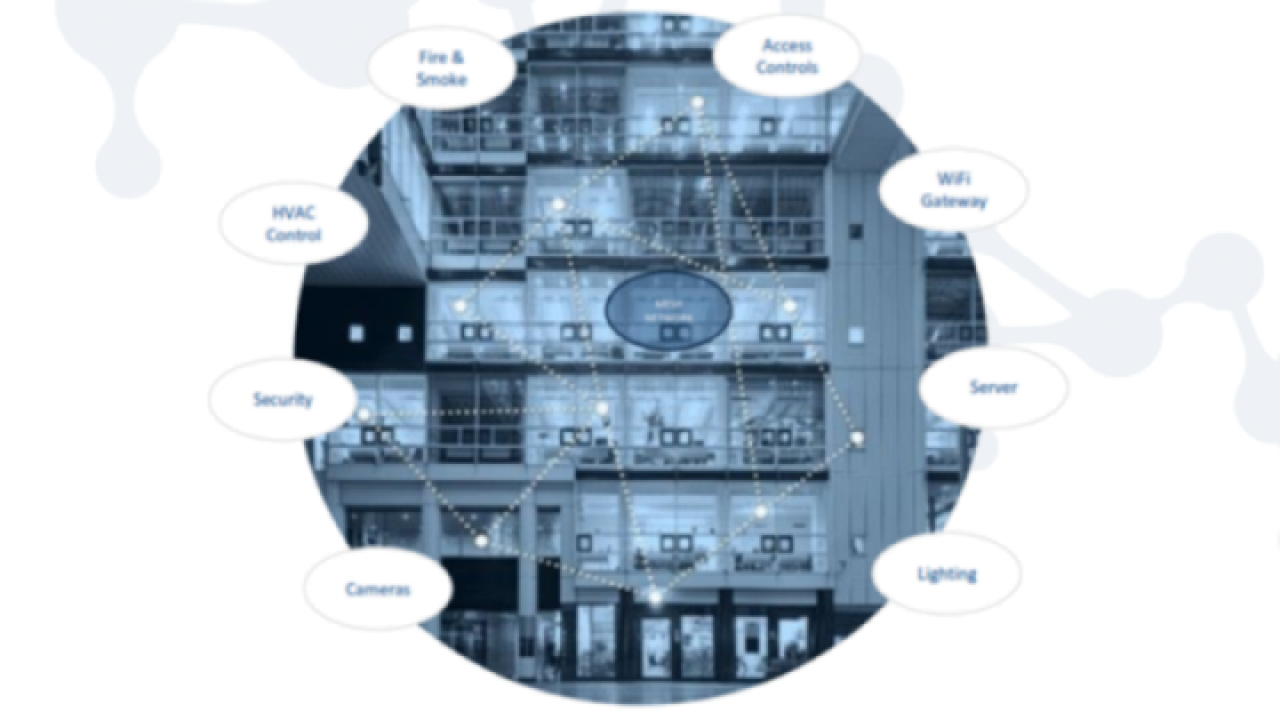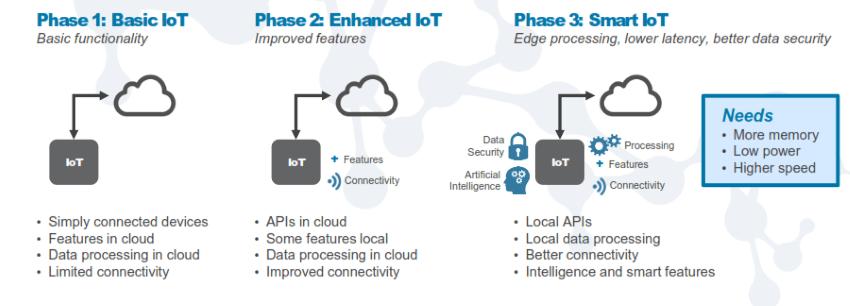IoT Devices Need to be Smarter
Article By : Gary Hilson

The evolution of edge computing means that internet of things (IoT) devices need more smarts to make decisions rather just shipping data to be crunched to the cloud
TORONTO — The evolution of edge computing means that internet of things (IoT) devices need more smarts to make decisions rather just shipping data to be crunched to the cloud — this means that more memory is required without increasing its footprint.
Adesto Technologies’ latest non-volatile memory (NVM) family is aimed at both consumer and industrial IoT devices that need to be able to do more than just ship data off to the cloud. Dubbed FusionHD, it’s an extension of the company Fusion family but with more intelligence at low power and increased density, said Paul Hill, senior marketing director for the company’s serial flash products group.
The product line includes support for the new Serial Flash Reset Signaling Protocol (JESD252) and the latest version of the Serial Flash Discoverable Parameter (SFDP) standard (JESD216D) to make it easier for system designers to deliver smarter, more efficient, and more user-friendly devices.
Adesto envisions the FusionHD product line to be a broad range of “feature-rich” devices, including higher-end wearables, industrial systems, and sensor edge devices. Hill said that it differentiates itself from standard flash by its small page erase and write architecture that makes saving small packets of data quick and efficient, while larger packets can be saved and accessed with minimal CPU clock cycles. This helps to reduce power consumption.
This architecture is supported by a read/write SRAM buffer that reduces the number of times needed to write to the flash array, he added, which, in addition to decreasing CPU clock cycles and reducing power consumption, improves endurance of the FusionHD flash.

Adesto’s new FusionHD memory reflects the evolution of IoT as devices at the edge need more compute to function as the front end for artificial intelligence.
FusionHD demonstrates how much the demands of the IoT market have changed, according to Hill.
“Five years ago, when this product was launched, a whole megabit was the pinnacle of the low-density market," Hill said. "The latest-generation gadgets need 8, 16, and 32 with the same feature sets.”
Go back a decade, he said, and a basic IoT-connected device had a simple wireless interface that connected to the network, sent some data, and disconnected from the network. “It did a very basic function,” he said.
Now, devices such as home hub devices are doing more local processing before sending it to the cloud and back.
Hill said that adding more smarts — including more intelligent, denser memory — reduces the need for network connectivity and traffic and increases response time.
“It can handle basic functions locally without even using the cloud, such as turning your lights on and off,” Hill said. Those functions can be even more intelligent, he added. “You can program that intelligence in locally so it can recognize bedroom one versus bedroom two. It can recognize your porch lights versus your kitchen lights.”
Machine-Meshed Networks
An industrial example is machine-meshed networks in building control for lighting, servers, gateways, access control, fire and smoke safety, structures or systems, ventilation control systems, security, and cameras, said Hill. “Every time a node is updated, added, or removed, every other node in the network needs to have an update sent to it,” he said.
If a node goes down unexpectedly, every other node can automatically reroute the path that’s around that faulty node. “But if you add a new door access control or a new light control, you need to store a few bytes of data in every other node on the network,” he said. "This can be power- and MCU-intensive and reduce battery life, but FusionHD can address those challenges in such a scenario.
The added smarts that a memory device such as FusionHD adds at the edge reflects that IoT is a front end for AI, said Richard Wawrzyniak, principal analyst at Semico Research Corp. “The more robust you can make IoT, the better off the AI is going to be,” Wawrzyniak said.
When most people talk about AI, Wawrzyniak said, they talk about developing an algorithm trained in the cloud and deploying it into an end-point device for inference. “But when you do that, the end-point device still has to use the IoT network that’s already in place — all the sensors and all that stuff,” he said.

A good use case for a device with more resident intelligence is a machine network for building control.
Right now, AI is very good at telling the difference between a house cat and a Bengal tiger because it’s trained to do that, but if a device at the edge suddenly needs to tell the difference between the cat, the tiger, and a giraffe, it can’t because it’s not trained do that. Wawrzyniak said that for IoT and AI to get beyond the cool factor and do beneficial things like save money for the end users, edge devices will all need to have more onboard AI.
“Ultimately, where we’re going here is [that] somebody is going to create an AI software program that an individual can own, not in the cloud, that’s personalized to them only,” he said. “It knows my likes, my dislikes, the information about how I do things … It acts as an intermediary between me and the huge mountain of data that’s about to descend on my head from the cloud.”
For that to happen, he said, edge devices need to be robust enough to support distributed AI with enough compute resources including memory. “Most of the data crunching is going to be processed locally in the end-point devices, and now people are starting to put the right level of compute resources there to do that," Wawrzyniak said. "What Adesto is doing plays right into that.”
Subscribe to Newsletter
Test Qr code text s ss


